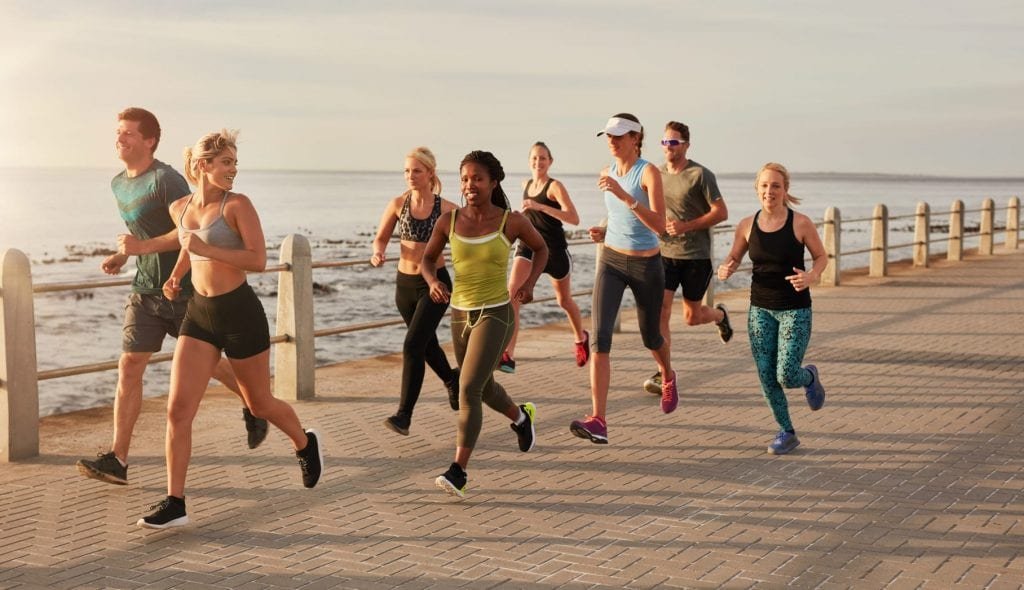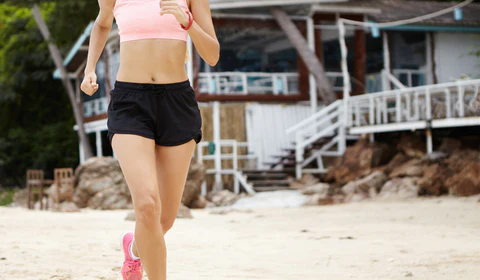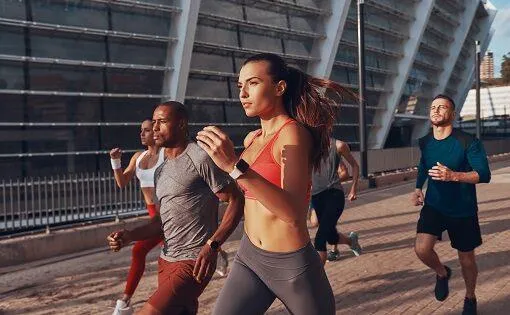Hey there, picture this: It’s a crisp Saturday morning, and I’m lacing up my sneakers for a trail run. The sun’s just peeking over the hills, birds are chirping like they’re auditioning for a nature documentary, and I’m in these buttery-soft leggings that hug just right without feeling like a vice. That’s the magic of good sportswear and activewear—it’s not just clothes; it’s the quiet confidence that lets you chase your goals, whether that’s a personal best or just surviving that spin class without chafing. I’ve spent years testing gear on everything from muddy hikes to sweaty yoga flows, and let me tell you, getting it right can turn a grueling workout into something almost enjoyable. In this guide, we’ll unpack what these terms really mean, why they matter, and how to build a wardrobe that moves with you. Stick around; by the end, you’ll be ready to ditch those baggy old tees for good.
What Is Sportswear?
Sportswear is the no-nonsense gear built for the grind—think fitted jerseys that slice through the wind on a bike ride or compression shorts that keep your muscles locked in during a pickup basketball game. It’s all about performance, designed with specific sports in mind to boost speed, support, and safety. Back in my college days playing intramural soccer, slipping into a proper kit felt like suiting up for battle; suddenly, every sprint felt sharper.
Unlike everyday threads, sportswear prioritizes function over flash, often using techy fabrics that wick sweat faster than you can say “dehydration.” It’s the stuff pros wear, but scaled down for weekend warriors like us.
What Is Activewear?
Activewear, on the other hand, is your chill best friend—the versatile pieces that blur the line between gym and grocery run. These are the leggings you can rock for hot yoga then pair with a denim jacket for coffee with friends, all while staying comfy and cute. I remember the first time I wore a seamless tank top to a casual brunch post-workout; no one batted an eye, and I felt put-together without trying.
It’s less about crushing records and more about everyday movement, embracing that athleisure vibe where comfort reigns supreme. Activewear invites you to stay active without the intimidation, making “me time” feel effortless.
The Key Differences Between Sportswear and Activewear
At first glance, sportswear and activewear might seem like twins separated at birth, but dig a little deeper, and you’ll spot the family feud. Sportswear is laser-focused on high-stakes action, like a tailored suit for your quads during a marathon, while activewear plays the role of that cozy sweater you live in. Once, I grabbed what I thought were running shorts for a casual jog—turns out they were pure activewear cotton blends, and by mile three, I was soaked and chafed. Lesson learned: intent matters.
The real divide? Sportswear demands durability for intense play; activewear craves versatility for life’s lighter lifts. Both overlap in breathable basics, but choosing wrong can turn triumph into tragedy—or at least a laundry nightmare.
Design and Fit
Sportswear hugs like a second skin, with strategic seams and padding to cut drag and cradle impact zones—perfect for that explosive volleyball spike. Activewear? It’s looser, more forgiving, like a gentle embrace that lets you flow through pilates without restriction. Funny how a too-snug activewear top once had me waddling like a penguin in downward dog; fit isn’t one-size-fits-all.
Prioritize based on your jam: tight for power sports, relaxed for flowy fun.
Materials and Functionality
Sportswear leans into high-tech synthetics for moisture-wicking wizardry and compression magic, keeping you cool under pressure. Activewear mixes in softer blends for all-day wear, trading some performance punch for lounge-ability. I once sweated through a cotton activewear tee in a humid spin class—never again; synthetics saved my next session.
Functionality boils down to need: elite edge for sportswear, everyday ease for activewear.
Use Cases and Versatility
You’ll strap on sportswear for game day glory, like cleats and kits that scream “team player.” Activewear shines in hybrid life—yoga to errands, no outfit change required. It’s the reason I can hit the trails then grab tacos without a wardrobe pit stop; versatility is its superpower.
Blend them wisely: sportswear for the field, activewear for the field trip.
A Quick History of Sportswear and Activewear
Our love affair with movement-ready clothes kicked off in the late 1800s, when women traded corsets for bloomers to pedal bikes without toppling over—talk about a revolution on wheels. Fast-forward to the 1920s, and tennis icon Suzanne Lenglen was strutting courts in pleated skirts that screamed freedom, turning sporty threads into style statements. By the ’70s, Jane Fonda’s leotards had us all leg-warmered up for aerobics fever, blending fitness with flair.
Today, it’s a $500 billion beast, fueled by athleisure’s rise—remember when yoga pants were scandalous? Now they’re boardroom staples. That evolution? It’s proof we’re finally dressing for the life we live, not just the one we’re supposed to.
Essential Types of Sportswear and Activewear
From tanks that tank your excuses to shorts that shorten your recovery time, the wardrobe essentials are your foundation. Start with basics that layer like a pro: a breathable top for sweat equity, bottoms that bend without breaking, and supportive layers for whatever the weather throws. I’ve built mine around multi-use pieces—nothing worse than gear gathering dust.
Focus on staples that flex across activities; your closet will thank you.
Tops: Tanks, Tees, and Hoodies
Tanks for low-impact layering, tees for sweat sessions, hoodies for cool-down chills—these are your upper-body MVPs. Opt for moisture-managing meshes that dry faster than your post-run playlist.
A good hoodie isn’t just cozy; it’s the emotional hug after a tough set.
Bottoms: Leggings, Shorts, and Joggers
Leggings for yoga’s graceful glides, shorts for sprint freedom, joggers for that tapered cool. Choose based on coverage: full-length for chill runs, shorter for heat waves.
I swear by joggers that transition to errands—effortless style hack.
Supportive Gear: Bras, Underwear, and Socks
Sports bras that lock in bounce, undies that vanish under layers, socks that grip without blisters—these unsung heroes prevent mid-workout wardrobe malfunctions. Prioritize adjustable straps and anti-odor tech; comfort starts from the inside out.
Don’t skimp here; one bad bra can derail your whole flow.
Footwear and Accessories
Sneakers engineered for your stride, hats that shade your grit, gloves for grip—these finish the fit. Match soles to surfaces: cushioned for pavement, grippy for trails.
Accessories aren’t afterthoughts; they’re your performance polish.
How to Choose the Right Materials for Your Gear
Picking fabrics is like matchmaking: pair the wrong one, and it’s awkward; nail it, and sparks fly. Look for breathability to evade sweat traps, stretch for seamless squats, and durability to outlast your Netflix queue. Once, I chose cheap cotton for a humid hike—ended up in a soggy sauna. Synthetics turned that around.
Test for feel: soft yet sturdy wins every time.
Moisture-Wicking Fabrics
Polyester blends pull sweat like a magnet in reverse, evaporating it before it clings. Ideal for high-heart-rate hauls.
They keep you dry, so you stay focused—not fanning yourself like a Victorian lady.
Breathable and Lightweight Options
Nylon or mesh lets air dance through, cooling you mid-stride. Perfect for endless summer sessions.
Light as a feather, but tough as your resolve.
Sustainable and Eco-Friendly Choices
Recycled poly or organic cotton blends save the planet without skimping on perks—soft, strong, and sweat-smart.
Green gear feels good on your conscience and your skin.
Compression and Stretch Materials
Spandex-infused wonders hug muscles for support, reducing fatigue like a built-in cheerleader.
Stretch without sag—your body’s best buddy.
Pros and Cons of Popular Sportswear Materials
Materials aren’t one holy grail; each shines in spots. Here’s a quick reality check to guide your picks.
| Material | Pros | Cons |
|---|---|---|
| Polyester | Wicks moisture fast; durable; affordable | Can trap odors if not treated; less breathable in heat |
| Nylon | Super stretchy; quick-dry; lightweight | Prone to pilling over time; synthetic feel |
| Spandex Blends | Compression support; full mobility | Overheats in humidity; needs careful washing |
| Cotton | Soft and natural; hypoallergenic | Absorbs sweat heavily; slower to dry |
| Recycled Fabrics | Eco-win; performs like synthetics | Slightly pricier; availability varies |
Weigh your workouts: endurance calls for wicking, chill vibes for cotton coziness.
Top Brands to Watch in 2025
The scene’s buzzing with heavy hitters and fresh faces. Nike’s still king for innovation, but challengers like Gymshark are nipping at heels with seamless fits that scream affordability. Lululemon owns the yoga lane, while Alo Yoga blends luxe vibes for that post-flow glow-up.
For value, Old Navy’s upgraded lines punch above weight. Emerging? Vuori’s coastal cool for outdoor souls.
Best for Performance: Nike and Adidas
Nike’s Flyknit tech propels runs; Adidas edges in soccer precision. Both deliver pro-level punch.
Reliable rockets for your routine.
Best for Everyday Athleisure: Lululemon and Athleta
Lululemon’s Align pants are cloud-like; Athleta’s inclusive sizing empowers all bodies.
From studio to street, seamless.
Budget-Friendly Picks: Old Navy and Fabletics
Old Navy’s got surprising quality; Fabletics VIP perks keep costs low.
High style, low spend—win-win.
Sustainable Standouts: Girlfriend Collective and Patagonia
Girlfriend recycles bottles into buttery bras; Patagonia’s ethos is earth-first toughness.
Feel good, do good.
Sportswear and Activewear Trends for 2025
2025’s vibe? Sustainable swagger meets techy twists. Athleisure evolves with modular pieces—zip-off pants for on-the-fly changes—and bold hues like electric teal for that pop. Smart fabrics track vitals, while gender-neutral designs level the field.
Sustainability’s non-negotiable: 70% of shoppers hunt eco-brands. Retro revivals, think ’70s tracksuits, add nostalgic edge.
Sustainable Innovations
Bio-based dyes and recycled ocean plastics lead the charge—gear that’s kind to knees and the seas.
Planet-positive performance.
Tech-Integrated Gear
Embedded sensors for form feedback; fabrics that adapt to temp swings.
Your clothes, now smarter than your phone.
Bold Colors and Prints
Neons and geometrics scream confidence—ditch neutrals for vibrant victories.
Stand out, sweat out.
Where to Buy Sportswear and Activewear
Hunting hauls? Online giants like Amazon stock everything, but specialty spots shine. Dick’s Sporting Goods for in-person tries; brand sites like Lululemon for exclusives. Pop-ups and outlets slash prices—I’ve scored steals at Nordstrom Rack.
Pro tip: Read reviews for real-talk on fit.
Online Retailers
Endless options, fast ships—REI for outdoor gems.
Click, try, thrive.
Brick-and-Mortar Stores
Touch-test at Gap or local gyms; energy’s half the fun.
Hands-on hunting.
Direct from Brands
VIP drops at Fabletics; custom vibes from Nike By You.
Tailored to you.
Best Ways to Care for Your Gear
Your kit’s an investment—treat it right to stretch its life. Wash inside-out in cold water, air-dry to dodge shrinkage, and spot-treat stains pronto. I’ve resurrected faded favorites with vinegar soaks; simple hacks save stacks.
Store flat, away from sun—your future self will high-five you.
- Machine Wash Tips: Gentle cycle, like delicates—harsh spins shred stretch.
- Drying Hacks: Skip the dryer; line-dry for shape retention.
- Storage Smarts: Fold, don’t hang, to prevent weird creases.
- Odor Busters: Baking soda spritz before wash zaps smells.
Little habits, big longevity.
People Also Ask
Ever Googled your way into a rabbit hole? Here are real queries folks are typing about sportswear and activewear, straight from search trends—answered quick and clear.
What is the difference between activewear and sportswear?
Activewear’s your versatile daily driver for yoga or walks, comfy and casual. Sportswear’s the performance beast for specific sports, like running kits with aero edges. Overlap exists, but one’s for flow, the other’s for fury.
What is considered activewear?
Think leggings, tanks, and joggers made for movement but cute enough for errands—breathable, stretchy staples that support light-to-moderate activity without screaming “gym only.”
Who buys the most activewear?
Millennial and Gen Z women lead the pack, snapping up 45% of sales for gym-to-street vibes—fueled by wellness waves and social scrolls.
Is athleisure the same as activewear?
Close cousins: Athleisure amps the fashion factor, blending activewear with street style for brunch-ready looks. Activewear’s purer function-first.
What fabrics are best for sportswear?
Synthetics like polyester for wicking, nylon for durability—pick based on sweat level and stretch needs.
FAQ
Got lingering questions? These cover the common curveballs from real searches—concise answers to keep you moving.
What’s the best material for workout clothes?
Polyester-spandex blends rule for wicking and stretch, but layer with merino for odor control in long hauls. Test for your sweat rate.
How do I know if my activewear is sustainable?
Hunt certifications like GOTS or recycled content labels—brands like Patagonia transparently track from yarn to you.
Can men wear activewear for formal events?
Absolutely, pair tailored joggers with a blazer for “elevated casual”—just ensure the fit’s sharp, not sloppy.
What’s the average cost of quality sportswear?
$50–$150 per piece; invest in basics like bras and shoes—they pay off in comfort and longevity.
How often should I replace my sportswear?
Every 6–12 months for high-use items; watch for pilling, lost elasticity, or funky smells that won’t fade.
There you have it—your roadmap to a wardrobe that fuels the fire without fizzling out. Whether you’re lacing up for a dawn dash or a sunset stretch, remember: the best gear whispers, “You’ve got this.” What’s your go-to piece? Drop a comment; I’d love to swap stories. Now go move—life’s too short for stiff clothes.



